|
2018,08,20, Monday
 Just before we left Akehama, as I recall, Umeo gave me her hand-made "misanga bracelet", a good luck charm made from knotted embroidery floss. It is said that when it breaks on its own, the wearer's wish comes true. She didn't mean anything special but gave it to me just like that. To me, it looked somehow quite special and I made one wish: may Umeo get confident about something, even if its a small thing. 7-year-old- Umeo used to be cheerful but hysterical - that was her nature, which was fine, but somehow not confident about herself. She had a tendency to compare with others a lot. Anyway, I made a small wish and wore the misanga bracelet around my right ankle. 13th Aug was, by the way, a big day for us, as a newly settled family here because the Bon-odori, a traditional dance festival of Japan was held for the first time after almost 40 years! Narada is such a small area of only about 20 residents at this moment including ourselves, but has such unique traditional cultures like folk dancing and singing accompanied by the shamisen (three-stringed traditional Japanese musical instrument), hand crafts, regional dialect, food culture, folklore and so on. Being the innermost hamlet of Hayakawa town, Narada used to be called "a land of mystery". The Bon-odori festival used to be an annual summer event in Narada, but as the number of residents decreased and people aged, there was no one who could organize it. Once, 20 years ago, a group of people who were originally from Narada area but lived outside of Hayakawa town, in their nostalgia, got together and held a Bon-odori festival, but couldn't involve Narada residents as they had expected, so they gave up organizing the event from the next year. Also, once 10 years ago, Japan Upper River Culture Institute, a community development NGO in Hayakawa, took an initiative to revive the event. However, it was not followed the next year... 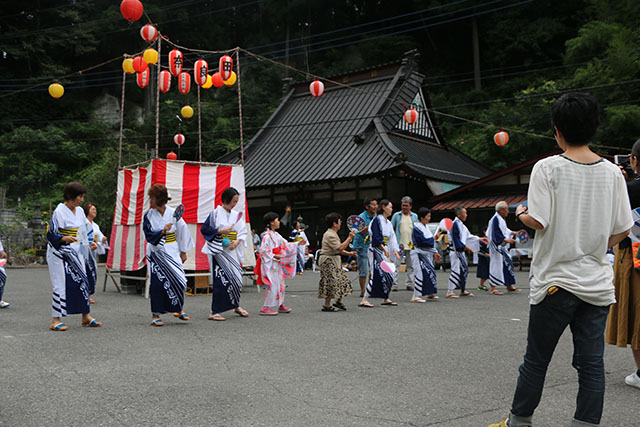 Then what about this time? This is actually the third challenge, but what was different about this year was that we, the actual residents of Narada, set up a mixed "Bon-odori Festival Committee" together with the senior generations, new settlers and original people. That was to aim for the actual revival. Actually, we, the young generation of Narada, took an initiative this time not for our entertainment, but with a kind of 'sense of danger'. Now, construction work to make a huge tunnel has been going on through a mountain of Narada to connect to Kofu, the biggest city in Yamanashi prefecture. And it is said that within 5 years, the tunnel will be opened, which means that Narada won't be the dead-end of Hayakawa town anymore. This place won't be inconvenient nor "a land of mystery" anymore, but very convenient and good access to urban areas! Some welcome this development of course, but others get worried and take it anxiously. "Anxiously" in a sense that Narada may become just one of the 'good-access sightseeing spots' and may lose its rich traditional culture as more and more people come here to live casually. And it's obvious that the current senior generation who has a rich knowledge and experience will be retired and we, who are now in our 30s and 40s, will be the main driving force of this hamlet. In the very near future, will we be able to stand up with confidence and be relaxed as representatives of the Narada people? When we ask this question to ourselves, we get really worried because the answer is NO. We hardly know about the culture on a first hand experience basis. That was how our challenge of Bon-odori festival revival project was launched. 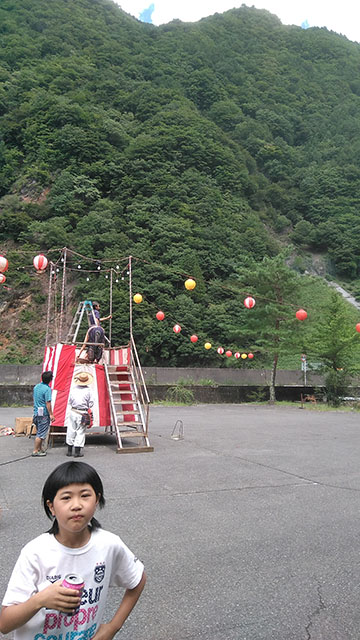 As for 9-year-old Umeo, as a child of the new settler family, learning folk dances and shamisen was a tool to build her identity as a member of this hamlet. At the same time, it was actually a process of building a kind of confidence about herself as an individual who has moved into various places; born in India, lived and entered elementary school in Ehime, and then moved to Yamanashi and settled in the innermost place of the town. 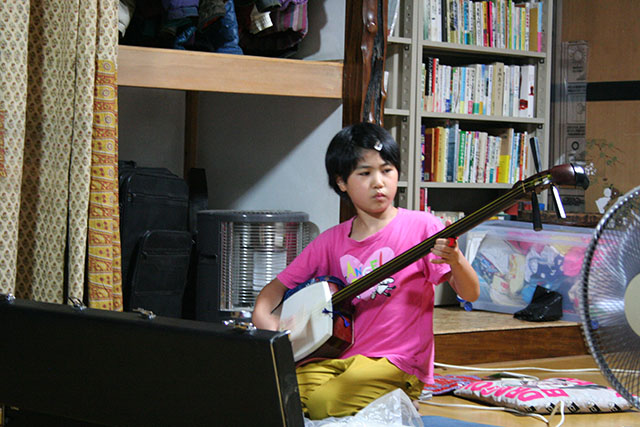 She made a big effort and spent a lot of time, struggling with the instrument too large for her age. Her natural competitive spirit helped quite a lot, I think, and she learned not only folk dances but also playing a couple of folk songs on the samisen. She performed on the samisen together with me, her teacher and other adults on the day of Bon-odori festival. A young TV director focused on her and broadcasted the program on TV as a short documentary as well. 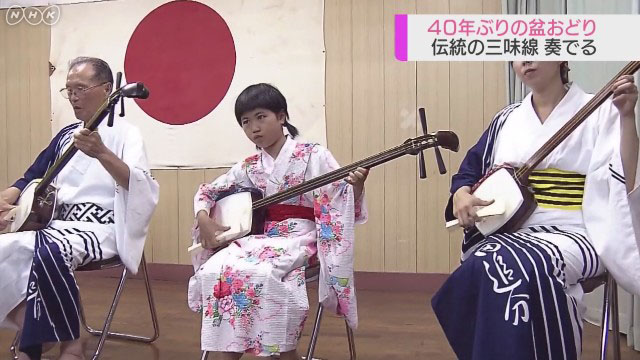 Last night, almost 10 days after the success of the festival, Umeo watched herself on TV, and we talked about her, who tried so hard and made it. She looked exhausted but fulfilled and happy. She looked a bit more mature than before and relaxed, to me. Then, that very evening, my misanga bracelet broke on its own and fell down....! Was it just a coincidence? Maybe no - it was a sign that my small wish had come true. Through this summer, she has stepped up a little bit indeed. I'm proud of little Umeo... By the way, 5-year-old Makasa picked up the fallen misanga bracelet quickly and tied it around her ankle saying "this is now mine,yeah!" Well, well, what wish will she make? Wakana  梅音、翔ぶ! 明浜を出るちょっと前くらいだったでしょうか。(う)がミサンガを作って私にくれました。カラフルな刺繍糸を編んで腕や足首につけて願い事をし、自然に切れたときにその願いが叶う、というものです。学校で流行っていたのかな、(う)は何気なく私に一つ作ってくれました。私には何となくそれが特別なタイミングなように感じられ、一つ願い事を立てました。(う)が何か一つ自信が持てるようになりますように、と。7歳だった(う)は、元気で生まれたころからの相変わらず喜怒哀楽が激しい気質。そのこと自体は何ら構わないのですが、どこか自分に自信がなくて、人とばかり比べては落ち込んでみたり怒ってみたりという年ごろでした。そんなことを感じていたこともあっての願掛けでした。  ところで、この8月13日というのは私たち移住家族とっては、とても大きな日でありました。約40年ぶりに、奈良田の盆踊りを復活させようという試みの本番の日だったからです。しかもイニシアティブは私たちIターンやUターンのメンバーです。奈良田は小さな集落で、私たち家族を含めても20名ほど。ですがとても特徴的な文化が今でも生きています。それは民謡の唄と踊りであり、三味線演奏、木工細工に独特な「奈良田ことば」、そして食文化や伝説まで、とても豊かです。そして奈良田は、早川町の最奥の集落であり、かつては「秘境」と呼ばれた土地でありました。 お盆に集落で集まって踊る、という習慣はかつては夏の年中行事だったそうですが、住民の減少とと高齢化で実施が困難になり、年中行事として途絶えて約40年なのだそうです。約20年前に一度、奈良田出身の町外居住者のグループが指揮をとって実施したそうですが、奈良田住民の巻き込みが思うように行かず一年切り。また約10年前にも一度、NPO法人日本上流文化圏研究所のイニシアティブで実施したけれど、これも翌年に続くことはなかったというのです。 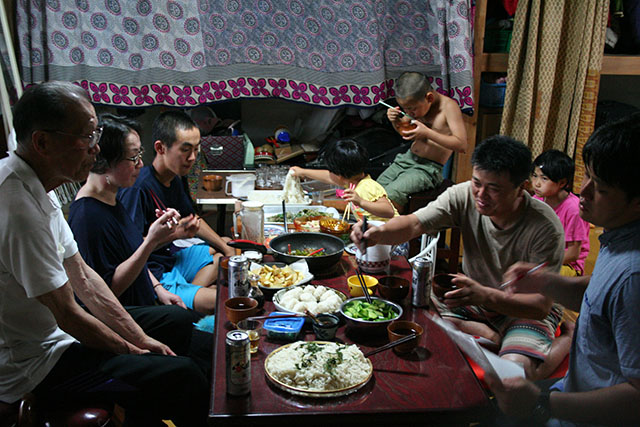 さて、今回はどうなるのでしょう。この3度目の正直、ともいえる試み。これまでとの違いは、若手とはいえ、奈良田居住者自らが実行委員会を組んで、先輩住民と相談しながら実施に至っているという点です。この背景には、単純に夏の娯楽のためというわけではなく、数年後に迫る「トンネル開通」を見越しての、ある種の危機感がありました。現在の奈良田は、早川町の最奥で多くの人に「不便だ」とひたすら言われ続けている集落です。それが約5年後には、甲府につながるトンネルが開通し、なんとも便利になるという・・・もちろん歓迎する声がある一方で、便利な一観光地・町への通過点になってしまうことへの不安を感じる声もあり。もしかしたら奈良田への移住者も増えるかもしれません。けれど、その時に独特なこの地の文化は関心を持たれていくのかどうか、それは今まさに30代、40代にある私たち世代次第に他ならないのだと思うのです。10年、20年という未来は、あっという間にやってくる。今はまだ元気な奈良田の達人たちが引退する時は、現実にやってくるのです。はっと気づいたときに何も知らないままでいいのかな。いや、怒られながら、苦戦しながらも、今から試行錯誤を始めておきたい・・・それが40年ぶりの盆踊り復活を目指した私たち世代の想いでした。 移住家族の子どもとしての9歳の(う)にとってはどんな体験だったのでしょう。彼女にとって、民謡の踊りを必死で覚え、三味線を練習していくことは、この集落のメンバーとしての立ち位置を探す過程そのものだったのだと思います。同時に、インドで生まれ、愛媛で育って、そして小学生になり、山梨の小学校に転校してきて、最奥の集落に暮らし始めた彼女が、何か達成感を実感するための手段のようにも映りました。 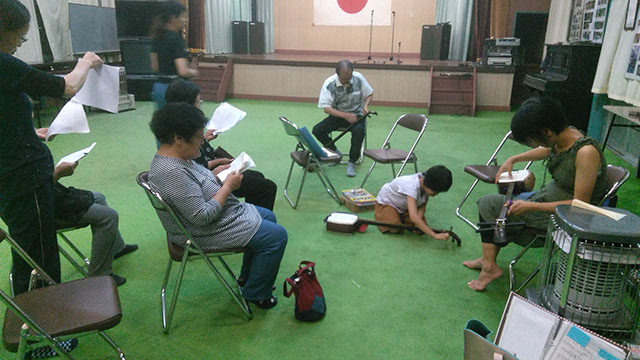 小さな身体にはまだ少し大きすぎる三味線に苦戦しながらも、たくさん練習を重ねていました。負けん気の強い性格も助けたのか、何とか2曲の民謡が盆踊りに間に合うようになり、他の大人たちに交じって櫓の前で演奏するに至りました。練習から本番までの過程を、若いNHKのカメラマンが追っており、先日短いドキュメンタリーとしても放映されました。TVで自分の姿を観て、どっと疲れた様子もありましたが、満足気な嬉しそうな表情。ちょっと大人びたような、緊張のほどけたような、顔。ちょうどその放送を一緒に観た夜、私の足首のミサンガがするりと取れました。何とも自然に、音もなく。たまたまか、いやでも願いが叶った瞬間だったのかもしれません。(う)はこの夏、小さくも大きな一歩を刻んだのかな。よくやったなぁ。 ちなみに私のミサンガが切れたとき、横にいた5歳の(ま)がすかさず拾い上げ、「次これ、まーちゃんの!」自分の足首に巻き付けました。あらら、どんなお願いごとをするのでしょうか。 (わ) 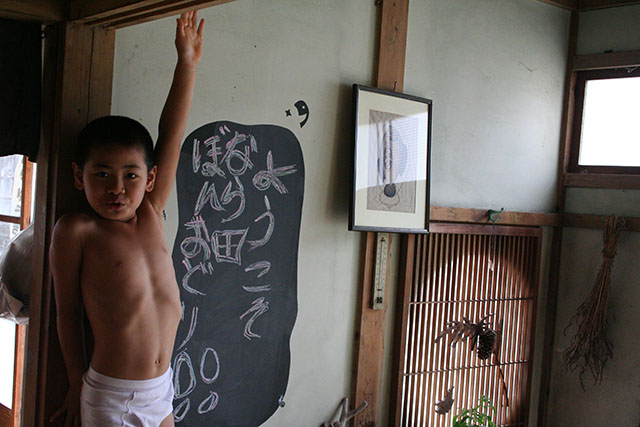 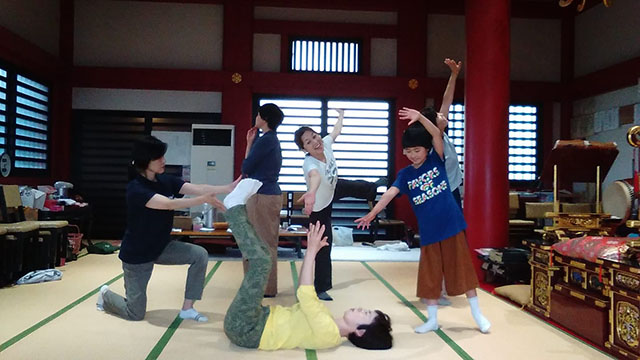 
| カテゴリ: どれみ |
|
